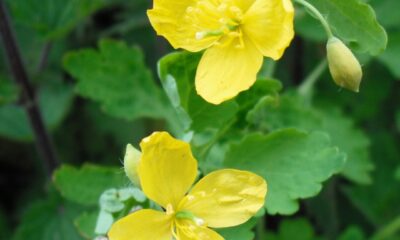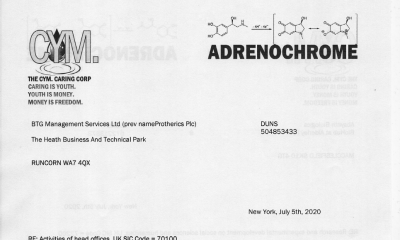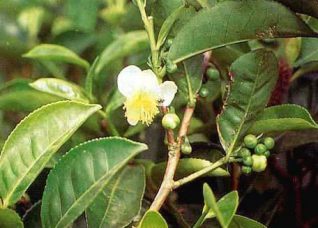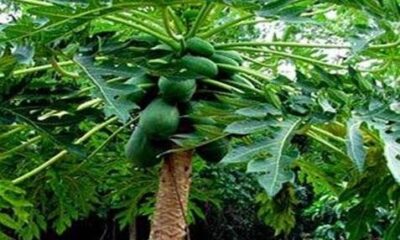1 Doctoral School of Biomedical Sciences, University of Oradea, 410087 Oradea, Romania
2 Doctoral School of Molecular Cell Biology and Immunology, Faculty of Medicine, University of Debrecen, H-4032 Debrecen, Hungary
3 Doctoral School of Animal Science, Faculty of Agricultural and Food Sciences and Environmental Management, University of Debrecen, H-4032 Debrecen, Hungary
4 Faculty of Agricultural Science, Food Industry and Environmental Protection, “Lucian Blaga” University of Sibiu, 550012 Sibiu, Romania
5 Faculty of Medicine, “Vasile Goldis” Western University of Arad, 310045 Arad, Romania
6 Faculty of Pharmacy, “Vasile Goldis” Western University of Arad, 310045 Arad, Romania
7 Doctoral School of Nutrition, Faculty of Agricultural and Food Sciences and Environmental Management, University of Debrecen, H-4032 Debrecen, Hungary
8 Agricultural and Molecular Research and Service Institute, University of Nyiregyhaza, H-4400 Nyíregyháza, Hungary
9 Faculty of Agricultural and Food Sciences and Environmental Management, University of Debrecen, H-4032 Debrecen, Hungary
*Authors to whom correspondence should be addressed.
Andreea-Adriana Neamtu and Rita Szoke-Kovacs contributed equally to this work and are both considered first author.
Published: 30 October 2020
Abstract
Bilberries (Vaccinium myrtillus L.) have been reported to hold a plentitude of health-promoting properties beyond basic nutrition, mainly attributed to their anthocyanin content and antioxidant activity. In this article, we built the phytochemical profile of three wild bilberry fruit extract formulations (aqueous, methanolic, and hydro-methanolic) using UHPLC-ESI-MS/MS putative analysis, identifying 88 individual phytochemicals, mainly flavonoids (total content 8.41 ± 0.11 mg QE/g dw), free amino acids, polyphenols (total content 21.68 ± 0.19 mg GAE/g dw), carboxylic acids, and vitamins. Furthermore, the antioxidant activity of the extract was assessed, reaching 78.03 ± 0.16% DPPH free radical scavenging activity, comparable to literature values determined for bilberry extracts of other origin. Due to the increased prevalence of metabolic syndrome and based on the reviewed benefits of bilberries, we tested the most potent formulation of our bilberry extracts in this biological context. The in vivo rescue effect of a bilberry extract supplemented diet on Drosophila melanogaster was assessed by monitoring biochemical and genomic markers. Hemolymph trehalose levels were halved upon addition of 3% hydro-methanolic bilberry extract to a high-sugar (1.5 M sucrose) diet, as compared to the non-supplemented high-sugar diet. Noteworthy, the rescue seen for flies kept on the bilberry extract supplemented high-sugar diet appeared to parallel the trehalose levels observed in the case of the control diet (50 mM sucrose) flies. Moreover, next to the trehalose-lowering type of in vivo effects, other gene expression related rescues were also detected for genes such as InR, Akh, AstA, AstC, Irk, Npc2g, and CCHa2 upon supplementation of the high-sugar diet with our hydro-methanolic bilberry fruit extract. Our findings suggest that such a bilberry fruit extract could generate physiological and genomic type of compensatory mechanisms so that further translational approaches would advance the understanding of some human specific pathological conditions.
Keywords: bilberry; phytochemical; antioxidant activity; flavonoid; polyphenol; hemolymph trehalose; insulin resistance; metabolic syndrome; Drosophila melanogaster
1. Introduction
Bilberries (Vaccinium myrtillus L.) are the native European blueberries, closely related to the North American blueberry species (Vaccinium corymbosum L.), both part of the widespread genus Vaccinium containing over 200 species [1]. Berries constitute a large group of functional foods, also nowadays known as “superfoods”, whose consumption delivers several health benefits beyond basic nutrition, mainly attributed to their anthocyanin content holding mainly antioxidant but also recently characterized antiglycoxidant properties [2,3]. Despite their similarities, berries differ in their phytochemical content, such as flavonoids and anthocyanins, of both plants and fruit [4,5,6]. The quantity of the main anthocyanins found in bilberries is more than twice the one found in blueberries [7]. Furthermore, anthocyanin content seems to be higher in wild bilberries as compared to the cultivated ones [8,9,10].
The biological effects of individual anthocyanins have been studied in detail; however, that does not hold true for the whole bilberry fruit extract. Complex interactions of multiple components within the food matrix may differ significantly in outcome when compared to a single purified constituent or constituents [11]. Hence, there is a need to evaluate the observed biological properties as a result of not only additive but also complementary synergistic and/or antagonistic effects, or any combination thereof, of all phytochemicals present [11]. In line with this rationale, we decided to focus our study on the whole bilberry fruit extract.
Bilberries have been observed to hold a plentitude of health-promoting properties. Research studies support their beneficial effects, among which antioxidant, anti-obesity, anticarcinogenic, cardioprotective, anti-inflammatory, hypoglycemic, antimicrobial, and vision improvement [12,13,14].
Based on the health-promoting properties of bilberries, we decided to study the extract in a Drosophila melanogaster model for insulin resistance and type II diabetes [15]. The first paper that explicitly modelled type II diabetes in Drosophila tested the role of a high-sugar diet on the acquisition of insulin resistance [16]. Characteristics of insulin resistance were assessed as rearing flies on high-sugar diet resulted in the overexpression of dilp 2,3,5 RNA and circulating DILP2. Despite increased levels of DILP(s) in circulation, sugar levels remained elevated—a feature resembling mammalian insulin resistance. Moreover, decreased levels of phospho-Akt were observed in response to administration of exogenous insulin in adult flies reared on a high-sugar diet, suggesting a decreased capacity of response to insulin signalling following chronic uptake of dietary sugar. Finally, flies exposed to a high-sugar diet exhibited elevation of free fatty acid and triglyceride levels as compared to the flies raised on a control isocaloric diet, and the morphology of lipid storage changed, to exhibit fewer, larger droplets [17]. Together, these studies showed that flies kept on a chronic high-sugar diet are hyperglycemic, insulin-resistant, and obese, constituting a relevant model to assess our bilberry fruit extract health promoting properties [18,19].
This is highly relevant nowadays, as in recent years, people consume increasingly higher amounts of carbohydrates, to reach what Bovi et al. suggestively called “the pandemic of sucrose intake” [20]. Added sugars represent empty calories, as they only supply food energy but no other nutrients. They increase the risk of developing obesity, inflammation, cardiovascular disease, hypertension, diabetes, insulin resistance, obesity-related cancers, and metabolic syndrome, a non-communicable disease responsible for morbidity and mortality predominantly in the developed world [21]. It is defined by the World Health Organization as a pathology characterized by abdominal obesity, insulin resistance, hypertension, and hyperlipidemia [22]. The incidence of metabolic syndrome in the United States is about one in three people, reaching epidemic proportions [23].
With growing attention dedicated to harvesting and consuming local foods, we find it important to build the chemical profile, including chemo-mapping, antioxidant activity, and polyphenol and flavonoid content of bilberry fruit growing in the Carpathian Mountains, in the central part of Romania, which is a novel analysis and never before made the subject of a scientific article to the best of our knowledge. We also examine the rescue effects generated by our bilberry fruit extract in relation to the modifications caused by a high-sugar diet, using Drosophila melanogaster as a nutritional genetic model.
Go to:
References:
https://www.mdpi.com/2076-3921/9/11/1067/htm


 Alternative Health2 years ago
Alternative Health2 years ago
 Life Force Network2 years ago
Life Force Network2 years ago
 Alternative Health1 year ago
Alternative Health1 year ago
 Life Force Network2 years ago
Life Force Network2 years ago
 Alternative Health2 years ago
Alternative Health2 years ago
 Military2 years ago
Military2 years ago



















